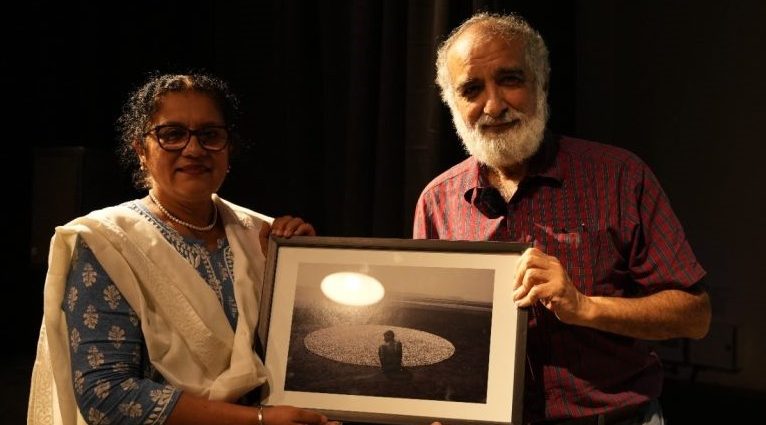Panaji, Nov 8, 2023: Jaipur’s Jantar Mantar, an iconic scientific marvel, was created in 1734 with ideas from astronomy scholars of various religions, including Jesuit priests from Goa, says a science historian in India.
The site is “truly an innovation far ahead of its time” and intrinsically secular in nature, said Dhruv Raina November 5 while delivering a lecture at the MOG Sundays, an initiative of the Museum of Goa, Pilerne.
The Jantar Mantar is a collection of 19 astronomical instruments built by Sawai Jai Singh, the founder of Jaipur in the present day Rajasthan state.
“Many Jesuits who came to India from France were astronomers. They interacted with local traditions and ways of doing astronomy. Jai Singh II wrote to the Governor of Goa to tell him that he needed some astronomers and the governor sent some Jesuit priests,” Raina said.
Hence, Jai Singh II’s endeavour facilitated interactions between Muslim, Brahmin and Christian astronomers, making it a secular space, he added.
The site that features the world’s largest stone sundial now holds UNESCO World Heritage status. The Rajput king built the Jantar Mantar in pursuit of accurate scientific knowledge and its production. The sun dial is colloquially known as the ‘Samrat Yantra’ or ‘King of Instruments,” Raina explained.
While architectural traditions of the Indian subcontinent generally promote symbolic carvings on all surfaces, the walls of the Jantar Mantar are intentionally left bare, according to the academician.
Conceptualized as a scientific space, Raina said this should lack distractions as there are people of different persuasions working together and you cannot appeal to the aesthetic sentiments of a favoured community. “The architecture here conforms to that idea,” he said.
The Jantar Mantar (jantar translates to instrument and mantar refers to a calculation method), site has been extensively studied by science historians. It facilitates observation of celestial positions through the naked eye. It comprises 19 astronomical devices.
According to Raina, the Jantar Mantar is an improved and innovative version of the Samarkand observatory in Ulugbek, Uzbekistan, which is another testament to its cosmopolitanism. He also mentioned that the observatory conforms to Bauhausian or Modernist trends in architecture almost a century before the emergence of modern scientific spaces.
The Jantar Mantar’s construction has both religious and sociopolitical significance. There was a demand for calendrical reform within the Mughal Empire for secularization of time. This would help plot widespread campaigns and days of reverence accurately. As Jai Singh II was both the ruler of Amber and an official of the Mughal Empire with an affinity for astronomy, he was approached with the task and consequently constructed the laboratories.
Raina also talked about how Jai Singh II built five Jantar Mantars – in Benaras, Mathura, Ujjain, Delhi and Jaipur, – as he thought building more laboratories would enable more people to make accurate observations.
“Long before people talked about the popularization of science, Jai Singh II made the laboratories available to many astronomers and astrologers to rectify existing inaccuracies,” he added. This is mentioned in Jai Singh II’s almanack titled ‘Zij-i-Muhammed Shāhi’ in dedication to the then-Mughal emperor Muhammed Shah in Delhi.
Dhruv Raina is best known for his work on the domestication of science in colonial India, transnational intellectual networks of science and historiographies of science.
Since 2003, he has been the professor of history of Science Education at the Zakir Husain Centre for Educational Studies, Jawaharlal Nehru University, New Delhi. He was a scientist at the National Institute of Science, Technology and Development Studies, New Delhi during 1991-2002.
He is currently on the Council of the Division for Logic, Methodology and Philosophy of Science and Technology of the International Union of History and Philosophy of Science and Technology.
Source: goemkarponn.com


Two centuries earlier Jesuit Sanskrit scholars St Rudolph Aquaviva and Francis Roth were at the court of Emperor Akbar in Agra